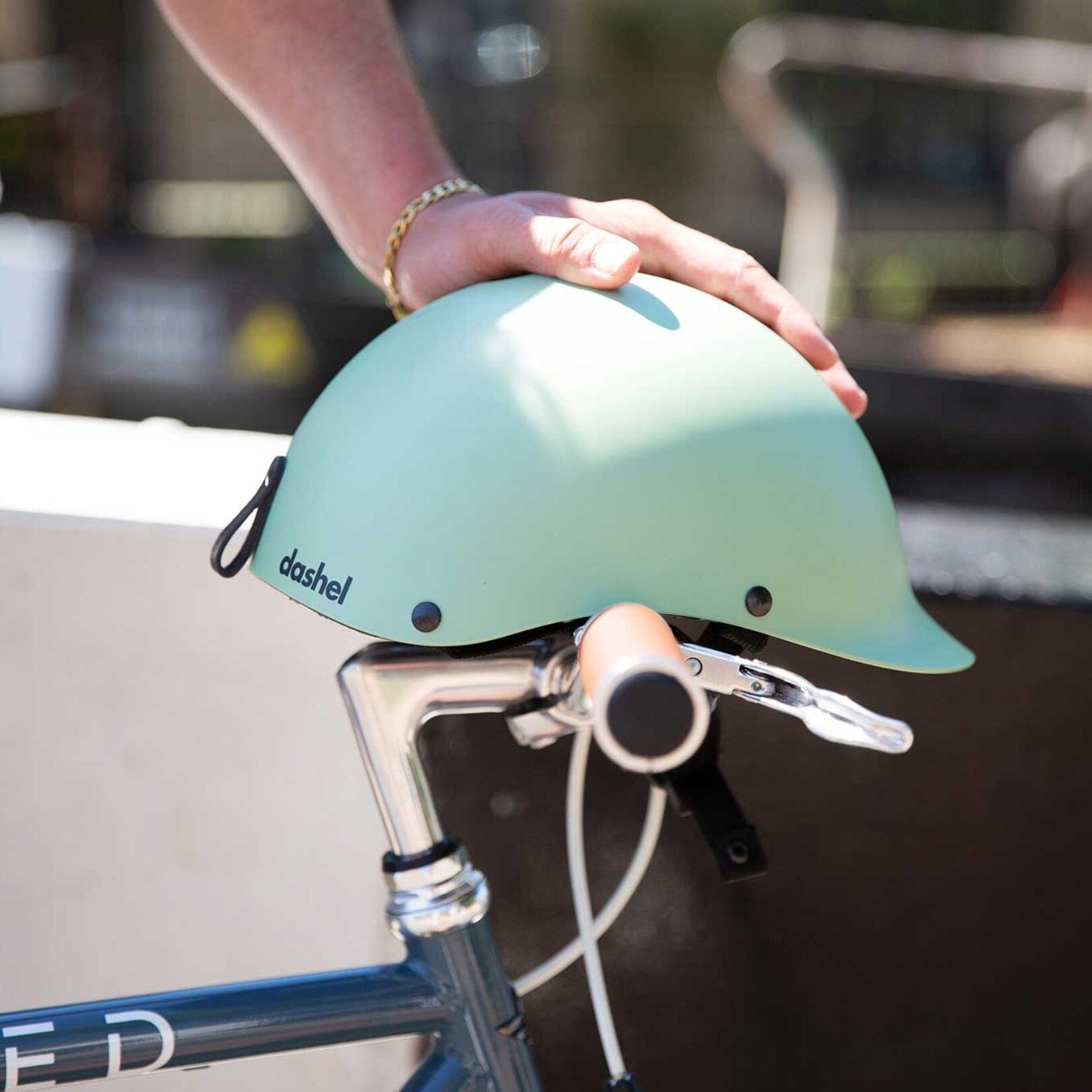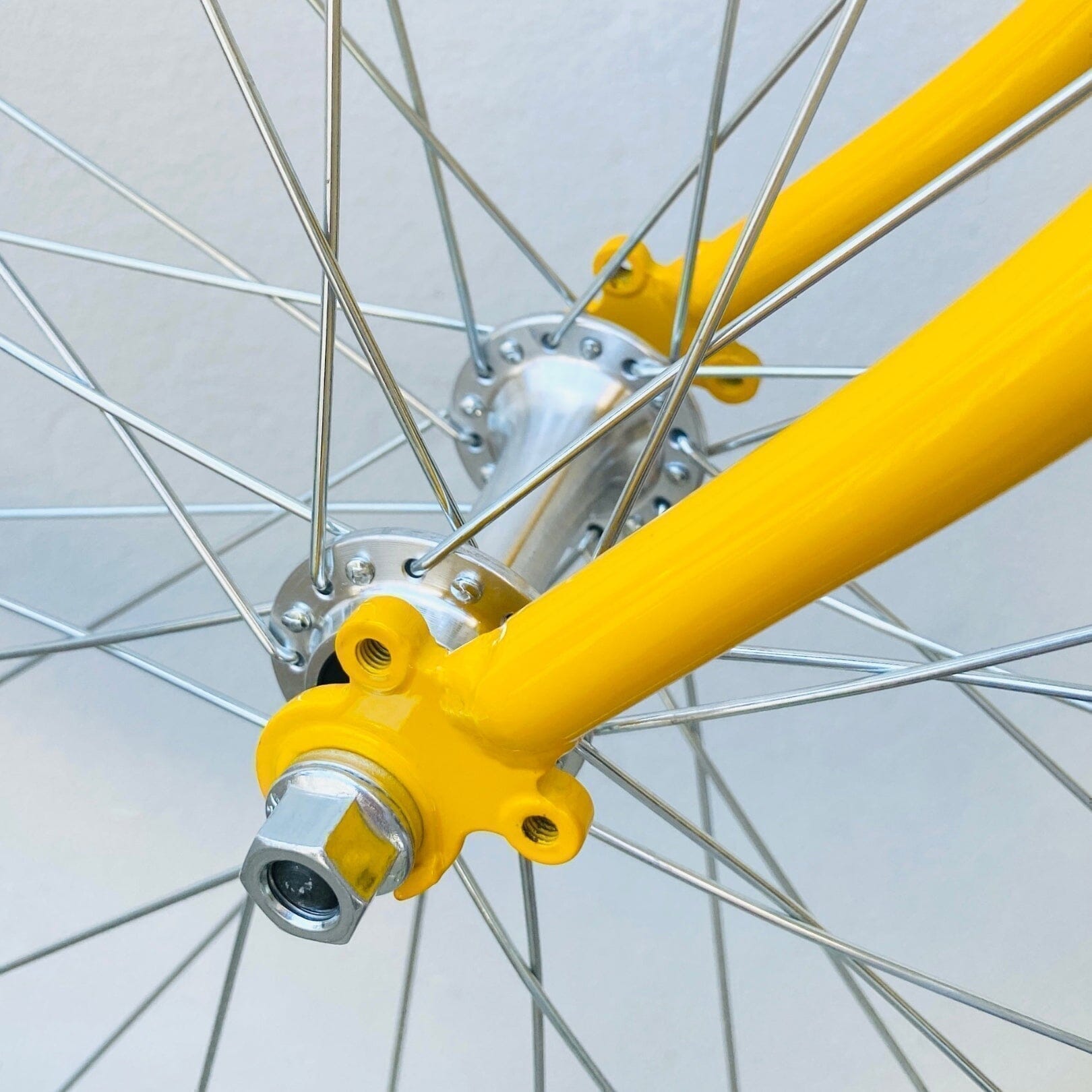When is it time to change your bike helmet?

It's no secret that a helmet can save your life. In fact, it could be the most essential piece of gear you own as a cyclist. This is why you must check and make sure that your bike helmet is safe to use, so you can ride without risking your life.
But how do you keep it in tip-top shape to ensure its effectiveness? When should you consider buying a new bike helmet — and what do you need to look for in a replacement?
These may not be the first things you ask yourself when you see your shiny new helmet. However, it’s crucial to know. Below are the answers to these important questions, as well as some other facts you might find helpful.

Do bicycle helmets expire?
All helmets have a lifespan. This lifespan isn't fixed although regular wear and tear can shorten the life of a helmet, it really depends on how you use it and how you take care of it.
Helmets eventually wear out, the straps will get stretched out, or the inner lining may break down. Most manufacturers recommend replacing your helmet every three to five years.
The Snell Memorial Foundation, an independent helmet testing lab, conducted a study of how long helmets last and found that - on average - the useful life of a helmet is about five years.
Beyond seven years, the foam interior starts breaking down in a way that may not be visible to the consumer, but that reduces its effectiveness at absorbing impact during a crash. If you've had your helmet for longer than seven years, replace it, even if it doesn't look damaged.

How often should a helmet be replaced?
The short answer is that you should replace your helmet every five years, assuming you haven't had any direct impacts that would jeopardise the helmet's integrity. Here are three good reasons to replace your bike helmet:
1. Natural ageing:Even if the helmet has never been in an accident, it's still a good idea to replace it after five years of use because it's bound to deteriorate over time. Look for the manufacture date on your helmet and keep this time frame in mind for optimal protection.
2. Accelerated obsolescence:
Heat, sweat and exposure to UV light can all cause damage to the material of your helmet over time. If you leave it in a hot car or let it bake in the sun during an outdoor ride, you're speeding up that process, so helmets should be kept out of direct sunlight whenever possible.
3. Major impacts during sport:
Even if your helmet hasn't been in a crash, repeated hard knocks against a wall or other surface can damage the integrity of its structure. You don't want to rely on a helmet that has already absorbed some major blows.
Care and maintenance tips for bike helmets
Proper care and maintenance will help to prolong the life of your helmet. Follow these tips to help keep your helmet looking and performing at its best:1. Cleaning with the right products:
Clean your helmet with mild soap and water. Wipe off sweat, dirt and oil with a soft cloth.
A common mistake is using household cleaning products like glass cleaner or bleach to clean the helmet. These products can actually damage the helmet's protective properties and cause it to degrade faster.
2. Helmet replacement pads:Helmet pads wear down over time and become less effective at absorbing impacts. The pads are also there to absorb sweat from your head and will break down over time.
If you notice any foam pieces coming out of their slots or the pads are no longer comfortable against your head, it's time for new ones. Generally speaking, you should replace them once every year or two (or when they get too stinky).
Check manufacturer instructions on replacing helmet pads for specific details on how to do this for your particular model.
3. Take the manufacture date into account:As we mentioned before, this is a clear indicator of when to replace your helmet, even if it has no noticeable damage.
4. Check the external structure of the helmet:Like any other product, your helmet will eventually show signs of wear and tear. Frequently check the outside of your helmet for scratches or dents, as well as the strap and quick-release buckle for fraying or wear.
5. Check the retention systems:This is what holds your bike helmet in place on your head. Check the retention system by fastening the chin strap and pulling hard on it while pushing up on the back of the helmet. If the strap stretches more than a few millimetres or pulls out of the fastening, it's time for a new one.
6. Check the internal structure of the helmet:If you notice dents on the inside of your helmet or that the foam interior is separating from its outer shell, it's time to replace it immediately.

Things that can damage a bicycle helmet
There are many ways your helmet can get damaged, and they can range from relatively minor to reasonably major. The more serious ones include:
Environmental causes:Being exposed to hot temperatures or high humidity can cause helmets to crack or break apart due to expansion/contraction caused by heat or cold changes.
Chemical reasons:Many chemicals can deteriorate helmets, including acids, solvents, detergents, acids, and others. This is why you should always use just mild soap and water to clean it.
Physical causes:These include hitting against rocks or trees or even coming into contact with other people who are wearing helmets (for example, if two cyclists happen to be riding at high speed).
Faulty transport or storage:Helmets can get dented or scratched just by normal wear and tear from bumping around in a backpack or purse. So, make sure that you put your helmet in a safe place when it's not being worn. It is also important to keep it in a dry place.
Frequently Asked Questions (FAQs)
We are here to help you make the most of your ride. If you can’t find the answer you need in our FAQs, please contact us via phone or email.
We recommend Dashel Helmets. Made in the UK and fully recyclable, they’re light, safe and comfortable. They look great too!
Also…if you’re wondering where to get a stylish bike to go with your cool helmet, Steed Bikes has got you covered.

Should I change my bicycle helmet every five years?
Like most great products, helmet designs are constantly being improved to be lighter and stronger. They're also adjusted for better fit, comfort and safety. If you've had a helmet for more than five years, it is recommended that you replace it, even if it hasn't been involved in an accident.
What materials are used to manufacture a bicycle helmet?
There are many different materials that manufacturers use to create durable bike helmets. All of these materials work together to provide protection and comfort.
The helmet's outer shell is usually made with an injection-moulded plastic like polycarbonate, ABS, or polypropylene.
Polystyrene foam is a common material used in bike helmets because it absorbs shock well and is relatively lightweight. Basically, the foam gets crushed instead of your skull. This reduces the force of impact and could save your life.
A smooth fabric layer covers the inside of many bike helmets. This liner offers comfort while also making it easy to adjust the straps around your face and neck when putting on or taking off your helmet.
Additionally, some bike helmets include reflectors or flashing lights to increase visibility in low light conditions. These reflective elements are often made from plastic or metal and help you stay safe on the road by improving your visibility to drivers and other cyclists.
Summary
In short, a helmet will last longer if you take care of it. You wear it, sweat in it and sometimes bump it, so be sure to keep your eyes open for any kind of impact, and once you spot the signs of damage, be sure to trade in your old helmet for a new one. Although it may feel like you're paying for another helmet prematurely, this cost is far less than the price you'll pay if you’re wearing a deteriorated one in an accident. Always take care of your safety first!
0 comments







